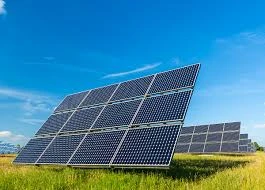maximum theoretical efficiency of solar panels
Understanding the Maximum Theoretical Efficiency of Solar Panels
Solar energy has emerged as one of the most promising renewable energy sources in the face of global climate change and the depletion of fossil fuels. At the heart of solar technology lies the concept of efficiency, particularly the maximum theoretical efficiency of solar panels. This metric indicates the highest possible efficiency a solar cell can achieve under ideal conditions, providing valuable insight into the potential advancements in photovoltaic technology.
The maximum theoretical efficiency is primarily determined by the detailed balance limit proposed by physicist William Shockley and mathematician Hans Queisser in 1961. According to their model, the maximum efficiency for a single-junction solar cell is approximately 33.7%. This limit arises primarily from the photon's energy distribution and the various losses that occur when sunlight is converted into electricity. These losses include thermalization, where excess energy from absorbed photons is released as heat, and the unavoidable recombination of electron-hole pairs before they can generate an electric current.
Solar cells are also subject to the effects of spectral mismatch, as not all wavelengths of sunlight contribute equally to energy conversion. The visible spectrum represents only a fraction of the total solar energy available, with parts of the ultraviolet and infrared regions remaining largely untapped in conventional solar cells.
maximum theoretical efficiency of solar panels

In pursuit of greater efficiency, researchers have devised various techniques and technologies. Multijunction solar cells, which stack several layers of different materials, can capture a broader range of the solar spectrum, potentially exceeding an efficiency of 40%. This is because each layer is optimized to absorb specific wavelengths, reducing the losses associated with spectral mismatch. Other innovative approaches include concentrator photovoltaics (CPV), which use lenses to focus sunlight onto small, high-efficiency solar cells, thereby increasing the effective energy capture.
Despite the notable advancements, achieving the theoretical maximum efficiency in real-world applications remains challenged by factors such as manufacturing costs, material availability, and environmental conditions. Therefore, ongoing research aims to bridge the gap between theoretical projections and practical applications.
In conclusion, while the maximum theoretical efficiency of solar panels sets an aspirational benchmark for researchers and developers, it is essential to recognize the complexities involved in real-world energy harvesting. Continued innovation in solar technology promises to enhance efficiency, reduce costs, and foster the widespread adoption of solar energy as a key component of a sustainable energy future. As we strive to optimize this renewable resource, understanding and advancing beyond the theoretical limits will be crucial in addressing global energy demands and combating climate change.
-
Unlocking Energy Freedom with the Off Grid Solar InverterNewsJun.06,2025
-
Unlock More Solar Power with a High-Efficiency Bifacial Solar PanelNewsJun.06,2025
-
Power Your Future with High-Efficiency Monocrystalline Solar PanelsNewsJun.06,2025
-
Next-Gen Solar Power Starts with Micro Solar InvertersNewsJun.06,2025
-
Harnessing Peak Efficiency with the On Grid Solar InverterNewsJun.06,2025
-
Discover Unmatched Efficiency with the Latest String Solar InverterNewsJun.06,2025







